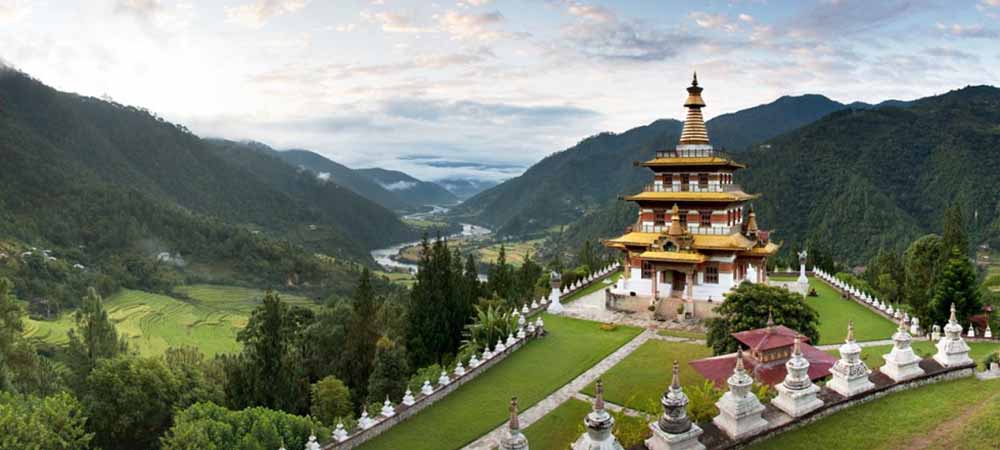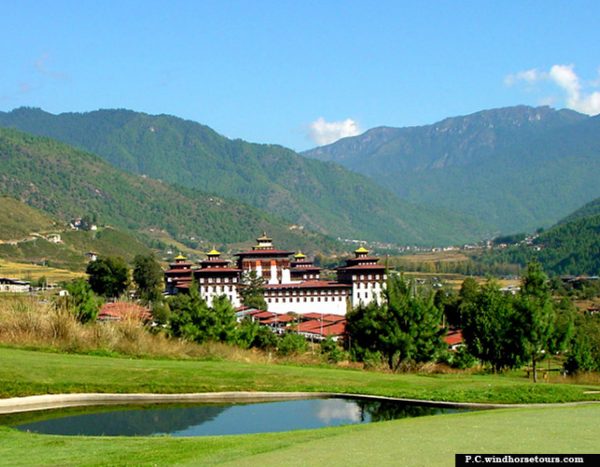
10 Nov Bhutan: Teaching the World About Being Carbon Negative
Talking heads report healthcare is top of mind these days, not climate change, though scientists report the world has until 2030 to fix the mess we put ourselves in – or else. According to a recent article by Mark Tutton and Katy Scott for CNN, when the subject is how to stem catastrophic climate change by drastically reducing carbon emissions, the tiny Kingdom of Bhutan is the mouse that roared. Read on to find out how the country became carbon negative – and the challenges it faces to stay that way.

High up in the Eastern Himalayas is one of the greenest countries in the world. While many nations are struggling to reduce their carbon emissions, the Kingdom of Bhutan is already carbon negative: it takes more greenhouse gasses from the atmosphere than it emits.
Sandwiched between China and India, Bhutan spans approximately 14,800 square miles — roughly the size of Maryland. Its vast woodlands cover approximately 70% of the country and act as a natural carbon sink, absorbing carbon dioxide.As a result, according to its own figures, this nation of around 750,000 people removes nearly three times as much CO2 as it produces.Bhutan’s ability to be a net carbon sink is partly down to its natural forests and the fact that it is relatively undeveloped — most people work in agriculture or forestry — which means it emits less than 2.5 million tons of CO2 each year. Luxembourg, for example, with a smaller population, emits four times as much.There are other carbon negative countries in the world, and they are also heavily forested and undeveloped. But in Bhutan, there are other factors at play.For the past 46 years the Bhutanese government has opted to measure progress not through its Gross Domestic Product, but through “Gross National Happiness,” which places great emphasis on the protection of the country’s rich natural environment.“Bhutan is the only country in the world that by its own constitution protects its forests,” explains Juergen Nagler, of the UN Development Program in Bhutan.Environmental protection is enshrined in the constitution, which states that a minimum of 60% of Bhutan’s total land should be maintained under forest cover for all time. The country even banned logging exports in 1999.What’s more, almost all the country’s electricity comes from hydropower.In fact, it produces so much hydroelectricity that it sells it to neighboring countries, which Bhutan claims offsets another 4.4 million tons of annual CO2 emissions. And Bhutan says that by 2025, increased hydroelectricity exports will let the country offset up to 22.4 million tons of CO2 per year in the region.At the COP15 climate summit in Copenhagen in 2009, and ahead of the 2015 COP21 summit in Paris, Bhutan pledged its greenhouse gas emissions would not exceed the carbon sequestered by its forests.Although projections show its emissions could almost double by 2040, the country will remain carbon negative if it maintains current levels of forest cover.Nagler says that remaining carbon negative is of utmost importance to the Bhutanese as they have a “very high environmental awareness'” and “appreciate harmony with the natural environment.”He explains that Bhutan is on a “green and low-carbon development pathway” with government initiatives to make the country’s agriculture 100% organic by 2020 and waste-free by 2030.Bhutan even limits the number of visitors entering the country with a daily fee of $250 per person to ensure the environment is not spoiled by mass tourism.


Sorry, the comment form is closed at this time.